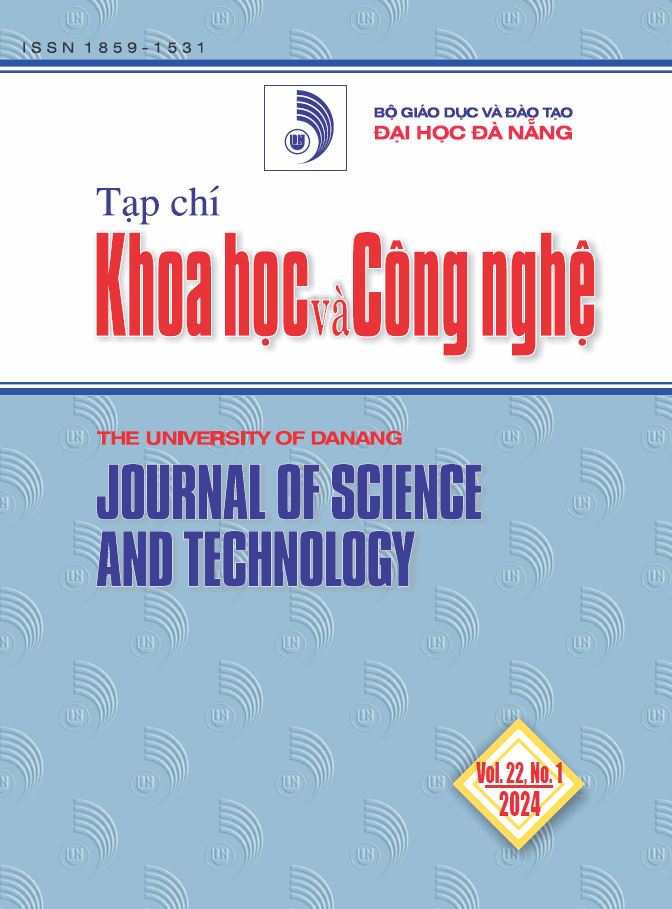Ảnh hưởng của mặn đến sinh trưởng, tình trạng nước và sắc tố quang hợp của cây thuốc lức dây (Phyla nodiflora)
 Tóm tắt: 428
Tóm tắt: 428
 |
|  PDF: 427
PDF: 427 
##plugins.themes.academic_pro.article.main##
Author
-
Trần Quang DầnTrường Đại học Sư phạm - Đại học Đà Nẵng, Đà Nẵng, Việt NamPhạm Công AnhTrường Đại học Sư phạm - Đại học Đà Nẵng, Đà Nẵng, Việt NamVũ Đức HoàngTrường Đại học Sư phạm - Đại học Đà Nẵng, Đà Nẵng, Việt NamVõ Châu TuấnTrường Đại học Sư phạm - Đại học Đà Nẵng, Đà Nẵng, Việt Nam
Từ khóa:
Tóm tắt
Lức dây (Phyla nodiflora) là loài cây thuốc có nhiều giá trị y học và có tiềm năng chịu mặn. Tuy nhiên, khả năng chống chịu của cây đối với mặn vẫn chưa được làm rõ. Mục tiêu của bài báo này là làm rõ khả năng chịu mặn và những thay đổi trong sinh trưởng, tình trạng nước và hàm lượng sắc tố quang hợp của cây ở các điều kiện mặn đất khác nhau (50, 100, 200, 400 mM NaCl). Kết quả cho thấy Lức dây có thể duy trì sự sinh trưởng với nồng độ mặn lên tới 400 mM NaCl. Sinh khối tươi và khô của cây không thay đổi đáng kể ở nồng độ 50–100 mM NaCl so với đối chứng, nhưng giảm tương ứng 51,68–71,15% và 34,96–58,03% ở các nồng độ 200–400 mM NaCl. Hàm lượng nước tương đối cũng đã giảm khi nồng độ muối tăng lên, tuy nhiên, hàm lượng các sắc tố quang hợp đã có xu hướng tăng có ý nghĩa ở nồng độ muối 400 mM. Điều này chứng tỏ sự tồn tại của những cơ chế chống chịu mặn ở cây Lức dây
Tài liệu tham khảo
-
[1] Abobatta, “Some physiological mechanisms of salt tolerance in the glycophytes plant: overview”, Acta Sci Agric, vol. 2, no. 12, pp. 154-156, 2018.
[2] Panta, T. Flowers, P. Lane, R. Doyle, G. Haros, and S. Shabala, “Halophyte agriculture: Success stories”, Environmental and Experimental Botany, vol. 107, pp. 71-83, 2014.
[3] Kumar and P. K. Sharma, “Soil salinity and food security in India”, Frontiers in Sustainable Food Systems, vol. 4, 2020, DOI: 10.3389/fsufs.2020.533781.
[4] Gupta and B. Huang, “Mechanism of salinity tolerance in plants: physiological, biochemical, and molecular characterization”, International Journal of Genomics, vol. 2014, ID 701596, 2014. DOI: 10.1155/2014/701596
[5] Zhao, H. Zhang, C. Song, J. K. Zhu, S. Shabala, “Mechanisms of plant responses and adaptation to soil salinity”, The Innovation, vol. 1, no. 1, 100017, 2020.
[6] Safdar et al., “A review: Impact of salinity on plant growth”, Nat Sci, vol. 17, no. 1, pp. 34-40, 2019.
[7] Kotagiri, V. C. Kolluru, “Effect of salinity stress on the morphology and physiology of five different Coleus species”, Biomedical and Pharmacology Journal, vol. 10, no. 4, pp. 1639-1649, 2017.
[8] O. Khan et al., “A practical and economical strategy to mitigate salinity stress through seed priming”, Frontiers in Environmental Science, vol. 10, 2022.
[9] L. Gross, M. Fatemi, M. Julien, H. McPherson, and R. Van Klinken, “The phylogeny and biogeography of Phyla nodiflora (Verbenaceae) reveals native and invasive lineages throughout the world”, Diversity, vol. 9, no. 2, pp. 1-20, 2017.
[10] Jabeen, U. Jillani, B. A. Chaudhary, and M. Uzair, “Phytochemical and pharmacological studies of Phyla nodiflora (Verbenaceae): A review. Pak J Pharm Res, vol. 2, no. 1, pp. 49-54, 2016.
[11] Yang, S. Lu, and T. Chen, “Verbenaceae”, Flora of Taiwan, vol. 127, no. 4, p. 421, 1998.
[12] R. Parmar, S. B. Baile, K. Gohel, A. Shah, S. Patel, A. K. Seth, “An ethnobotanical and pharmacological review on Phyla nodiflora”, International Journal of Pharmaceutical Research, vol. 12, no. 4, pp. 3667-3673, 2020.
[13] Abbas, I. Ahmad, Z. I. Khan, M. K. Okla, I. A. Saleh, and H. AbdElgawad: Comparative physiological adaptations to industrial pollution stress mediated by melatonin in riparian vegetation and Phyla nodiflora an ornamental plant”, Scientia Horticulturae, vol. 321, 112367, 2023.
[14] Sahin, M. Ekinci, S. Ors, M. Turan, S. Yildiz, and E. Yildirim, “Effects of individual and combined effects of salinity and drought on physiological, nutritional and biochemical properties of cabbage (Brassica oleracea var. capitata)”, Scientia Horticulturae, vol. 240, pp. 196-204, 2018.
[15] R. Wellburn, “The spectral determination of chlorophylls a and b, as well as total carotenoids, using various solvents with spectrophotometers of different resolution”, Journal of Plant Physiology, vol. 144, no. 3, pp. 307-313, 1994.
[16] González and M. González-Vilar, Determination of relative water content. In: Handbook of plant ecophysiology techniques, Springer, 2001.
[17] George, W. J. Horst, and E. Neumann, Adaptation of plants to adverse chemical soil conditions. In: Marschner's mineral nutrition of higher plants, Elsevier, 2012.
[18] Munns and M. Tester, “Mechanisms of salinity tolerance”, Annu Rev Plant Biol, vol. 59, pp. 651-681, 2008.
[19] Gong, G. Wang, W. Si, Y. Zhou, Z. Liu, and J. Jia, “Effects of salt stress on photosynthetic pigments and activity of ribulose-1, 5-bisphosphate carboxylase/oxygenase in Kalidium foliatum”, Russian Journal of Plant Physiology, vol. 65, pp. 98-103, 2018.
[20] Yang, W. Zheng, Y. Tian, Y. Wu, and D. Zhou, “Effects of various mixed salt-alkaline stresses on growth, photosynthesis, and photosynthetic pigment concentrations of Medicago ruthenica seedlings”, Photosynthetica, vol. 49, no. 2, pp. 275-284, pp. 2011.
[21] S. Verma and S. N. Mishra, “Putrescine alleviation of growth in salt stressed Brassica juncea by inducing antioxidative defense system”, Journal of Plant Physiology, vol. 162, no. 6, pp. 669-677, 2011.



